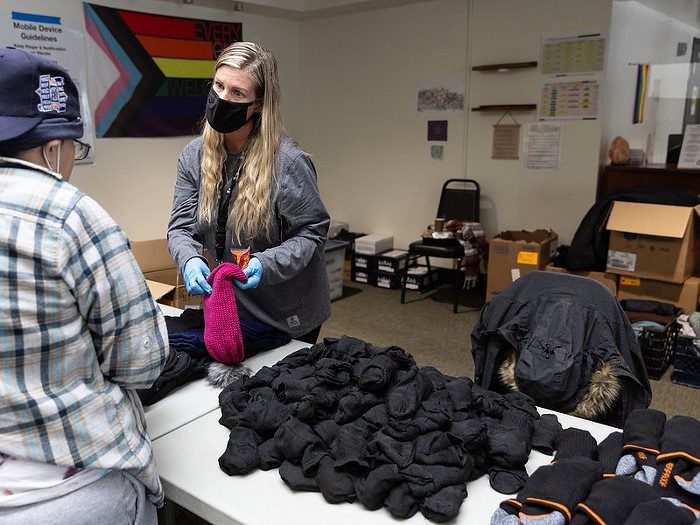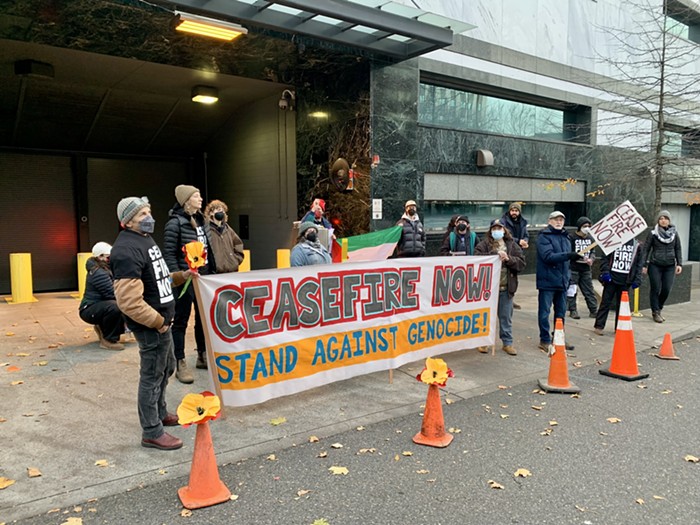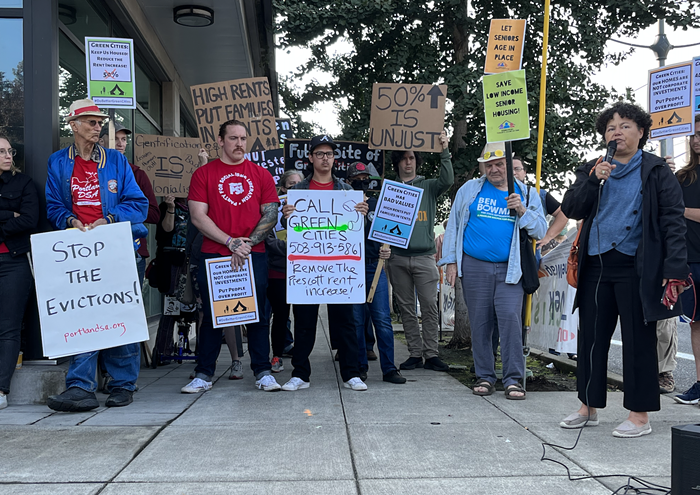THE CHORUS of police accountability advocates and other officials calling on the Portland Police Bureau to overhaul its policies for less-lethal weapons—including Tasers, beanbag shotguns, and pepper spray—is poised to grow even louder.
The Mercury has obtained a draft report written by a panel of the city's Citizen Review Committee (CRC) that urges a dramatic tightening in the standard Portland cops are supposed to adhere to when deciding to zap or pepper spray someone.
Under current Portland policy, officers can shock or spray someone who merely shows the "intent" to resist. But the report says cops should use their weapons only when someone is "actively" resisting—a suggestion that echoes a city audit ["Shocking Questions," News, Nov 25, 2010] and reflects the current will of the federal court that governs Portland.
The thinking is that Tasers and pepper spray are so painful that they ought to be used only when someone is actually posing a direct threat to a cop or someone else—not just if someone refuses to listen to an officer.
"That's the operating [legal] standard, and I think they need to go by that," says one of the report's authors, Michael Bigham, a former Port of Portland cop.
In other findings, the report also wants the bureau to resume tracking every time its officers come close enough to zapping someone that the Taser's laser pointer is activated. It also suggests capping the number of times a person can be shocked—a painful experience, at 50,000 volts— at three.
"Just pulling on that trigger"—and activating the laser pointer—"gets compliance," says Dan Handelman of Portland Copwatch. "How often is that effective?"
A report by the Community and Police Relations Committee, a branch of the city's Human Rights Commission whose members include police officers, also recommended, in a report issued last July, tracking so-called "laser dots."
But while the bureau should be familiar with the recommendations, there's a catch: The CRC's report is a long way from becoming final—and some recommendations may change. The police bureau also isn't compelled to accept them.
The latest draft is sitting on the desk of Mary-Beth Baptista, director of the city's Independent Police Review (IPR) office, awaiting her comments. The police bureau also will review the report and make suggestions. From there, Bigham says, the report's authors will consider those remarks before sending a version to the full, nine-member CRC for a vote. That's when officials had been expecting the contents of the report to be made public.
The process will pose an interesting test for the CRC, which handles appeals of police misconduct cases but also is tasked with helping the police bureau and Portland City Council fine-tune policies and procedures. Because of rule changes last year, this is the first CRC policy report that will go forward without the explicit approval of the IPR office.
"Once we get that input back from the IPR and the bureau, we'll sit back down and talk about them and see whether we would change any recommendations," Bigham says. "Or, if not, we'll see if we need more evidence to bolster them. I would lean more toward that."
Because the report has not yet been presented to the full CRC, Baptista wouldn't comment on its contents. She also was concerned the Mercury had an early copy, even though the report's authors met publicly for several months and circ- ulated drafts.
Baptista did say the process wouldn't unfold any differently under the new rules for CRC reports, arguing she'd never before exercised her right to censor a policy report.
"I prefer they make their recommendations directly to the bureau or city council," she says. "That way there's some kind of distance and independence."
The police bureau also declined to comment—but if past reports are a prologue, it isn't likely to sign off on the recommendations as written. The bureau resisted the city auditor's call to tighten its Taser policy and is hoping the legal landscape on Taser use changes in its favor.
Bigham says he expects some pushback on another recommendation in the report: a reaction to a shooting last summer when Officer Dane Reister seriously injured a man in a mental health crisis by mistakenly loading a less-lethal gun with live rounds.
Police since changed how they handle ammunition for the guns, adding safeguards and checks. But the report says police officials should consider either getting rid of live shotgun rounds altogether or buying less-lethal guns that are incapable of firing live rounds.
"Our concern was that it wasn't enough. It still could happen," Bigham says. "That's not to say they'll be receptive to that, but I think it's important."



















